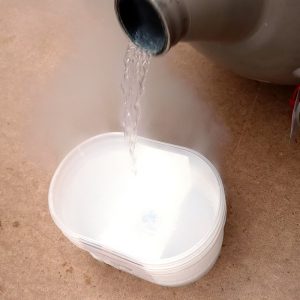
In metalworking, rolling refers to the use of two or more heavy-duty rollers to compress metal stock. The metal stock is fed through the rollers to achieve a lower profile and uniform thickness (among other things). Not all rolling processes are the same, however. Even if you’re familiar with hot rolling and cold rolling, there are other rolling processes used in metalworking, such as cryorolling. What is cryrolling exactly?
Overview of Cryrolling
Also known as cryogenic rolling, cryorolling is a rolling process that’s characterized by the use of cryogenic temperatures. In other words, it uses extremely cold temperatures while feeding metal stock through two or more rollers. By definition, cryogenic temperature is between -238 degrees to -460 degrees Fahrenheit, which is significantly cooler than the temperatures of both hot rolling and cold rolling.
How Cryrolling Is Performed
Cryorolling is typically performed in conjunction with liquid nitrogen. When metal stock is exposed to liquid nitrogen, its temperature decreases dramatically. Once the metal stock has achieved a cool enough temperature — between -238 degrees to -460 degrees Fahrenheit — it’s fed through multiple rollers.
Aside from its exceptionally low temperature, the steps to performing cryorolling is pretty much the same as that of other rolling processes, including hot rolling and cold rolling. The metal stock is fed through a pair or series of rollers. As this occurs, the metal stock compresses, thereby changing its physical properties.
The Benefits of Cryorolling
When compared to other rolling processes, cryorolling offers several benefits, the most notable being strain hardening retention. When metal stock is rolled using hot rolling or cold rolling, it won’t retain is hardness. Rather, it will lose some of its hardness after being rolled. Cryorolling, on the other hand, offers a superior level of strain hardening retention when compared to these and other rolling processes.
It’s also easier for metalworking companies to handle cryrorolled metal than hot-rolled metal. When exposed to room temperature, cryorolled metal quickly warms up, at which point it can be moved or otherwise handled.
In Conclusion
Cryorolling is a metalworking rolling process in which metal stock is fed through a pair or series of rollers at cryogenic temperatures. It’s often performed on steel, aluminum and other metals to increase its strength and hardness. The primary difference between cryorolling and other rolling processes lies in the temperature. With cryorolling, metal stock is exposed to liquid nitrogen, which drops its temperature down to just -238 degrees to -460 degrees Fahrenheit.
No tags for this post.